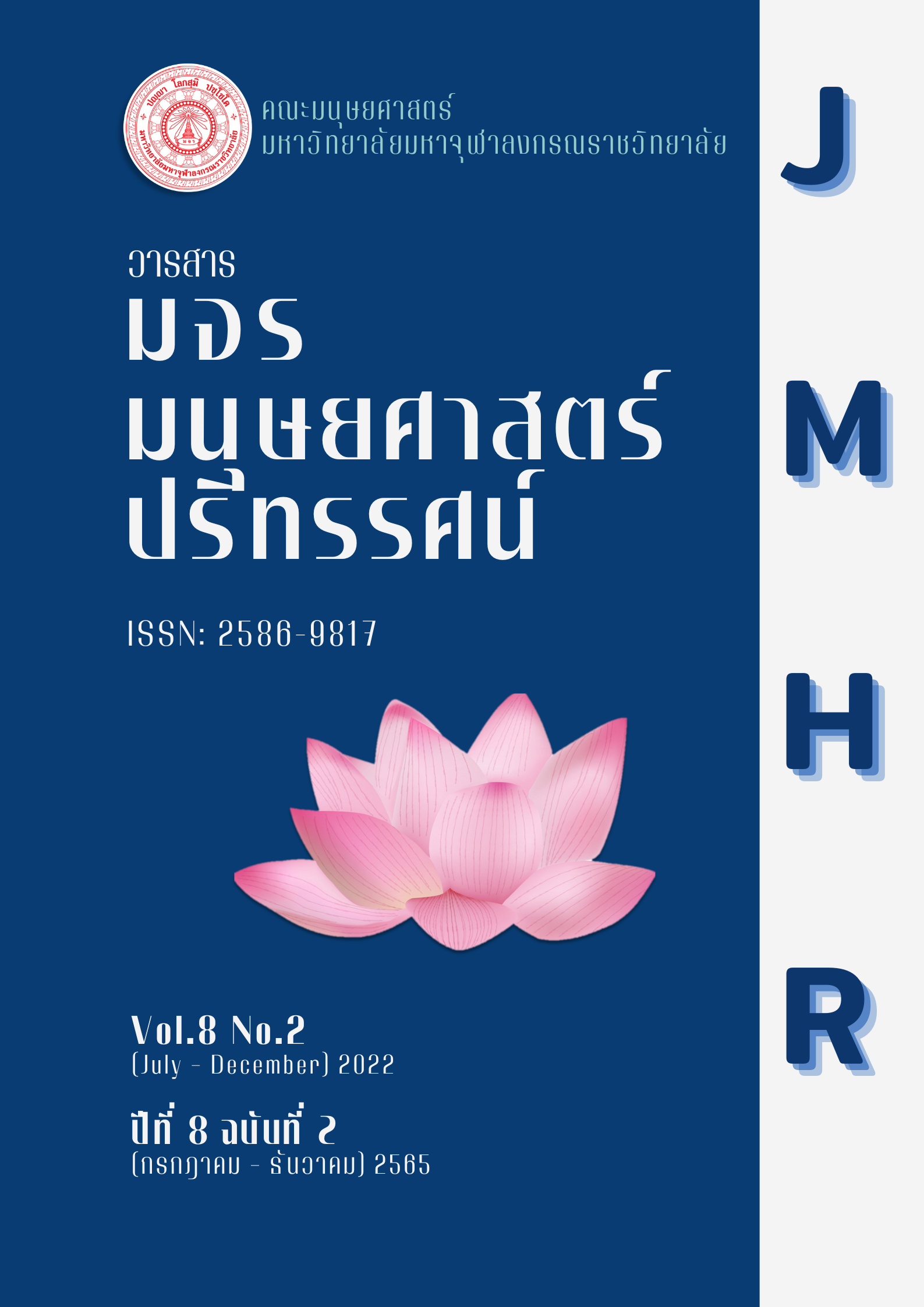การฟื้นฟูพระพุทธศาสนาในประเทศเนปาล กรณีศึกษา: วัดมุนิวิหาร เมืองภักตปูร์ กรุงกาฐมาณฑุ
คำสำคัญ:
การฟื้นฟูพระพุทธศาสนา, พระธรรมทูต, เนปาลบทคัดย่อ
บทความวิจัยเรื่อง การฟื้นฟูพระพุทธศาสนาในประเทศเนปาล กรณีศึกษา: วัดมุนิวิหาร เมืองภักตปูร์ กรุงกาฐมาณฑุ นี้มีวัตถุประสงค์ 1. เพื่อศึกษาพัฒนาการของพระพุทธศาสนาในประเทศเนปาล 2. เพื่อศึกษาปัจจัยที่ส่งผลต่อการฟื้นฟูพระพุทธศาสนาในประเทศเนปาล 3. เพื่อศึกษาผลของการฟื้นฟูพระพุทธศาสนาในประเทศเนปาล วัดมุนิวิหาร เมืองภักตปูร์ กรุงกาฐมาณฑุ เป็นการวิจัยเชิงคุณภาพ จากเอกสารและลงสนามเก็บข้อมูลด้วยการสัมภาษณ์เชิงลึก จากผู้ให้ข้อมูลหลักด้วยวิธีการสุ่มแบบแบบเจาะจง
ผลการวิจัยพบว่า 1. พัฒนาการของพระพุทธศาสนาในประเทศเนปาล แบ่งได้ 4 ยุค คือ ยุคแรกเริ่มการเข้ามาของพระพุทธศาสนาในประเทศเนปาลกับการสังคายนาครั้งที่ 3 ยุครุ่งเรืองของพระพุทธศาสนาในประเทศเนปาล (ยุคกษัตริย์ราชวงศ์ลิจฉวี) ยุคเสื่อมของพระพุทธศาสนาในประเทศเนปาลกับการบังคับใช้กฎระเบียบเนปาลราษฎรศาสตร์ และยุคฟื้นฟูพระพุทธศาสนาในประเทศเนปาล: เผด็จการรานาได้หมดอำนาจลง 2. ปัจจัยที่ส่งผลต่อการฟื้นฟูพระพุทธศาสนาในประเทศเนปาล พบว่า ปัจจัยภายในประเทศ ด้านสังคมและวัฒนธรรม ด้านนโยบายการเมืองและการพัฒนาประเทศ ด้านบทบาทของพระธรรมทูต ด้านการมีส่วนร่วมทางพระพุทธศาสนา และปัจจัยภายนอกประเทศ ด้านความสัมพันธ์ทางการทูตกับนานาชาติ ด้านการให้ความสำคัญพุทธศาสนิกชนชาวไทย เป็นปัจจัยสำคัญที่ส่งผลต่อการฟื้นฟูพระพุทธศาสนาในประเทศเนปาล วัดมุนิวิหารเมืองภักตปูร์ กรุงกาฐมาณฑุ 3. ผลของการฟื้นฟูพระพุทธศาสนาในประเทศเนปาล วัดมุนิวิหาร เมืองภักตปูร์ กรุงกาฐมาณฑุ พบว่า พระภิกษุสามเณรเนปาลสามารถนำความรู้และหลักธรรมทางพระพุทธศาสนาที่ศึกษาในประเทศไทยไปเผยแพร่ยังประเทศเนปาล ทั้งการร่วมปฏิบัติธรรม ทำกิจกรรมทางพระพุทธศาสนา ช่วยงานด้านศาสนศึกษาในวัด เป็นผู้ประสานความร่วมมือกับธรรมทูตชาวเนปาลและชาวไทย รวมถึง สนับสนุนช่วยเหลือในการสร้างวัดและบูรณะศาสนสถานทางพระพุทธศาสนาในเนปาล ที่สำคัญคือ การแสดงพระธรรมเทศนาให้แก่ประชาชนทั่วไปได้เรียนรู้ และเข้าใจปรากฏการณ์ต่าง ๆ ของชีวิตทำให้พระพุทธศาสนาได้เป็นที่รู้จักในประเทศเนปาลเพิ่มมากขึ้น
เอกสารอ้างอิง
ประยูร ป้อมสุวรรณ์. (2554). พระพุทธศาสนาในโลกปัจจุบัน. กรุงเทพฯ : มหาวิทยาลัยราชภัฏพระนคร.
ธนู แก้วโอภาส. (2550). ศาสนาโลก. กรุงเทพฯ : สำนักพิมพ์ลอจิก.
พระครูธรรมธรบงกช คนฺธาโร (ไกรทอง). (2560). พุทธวิธีการเจริญสัมพันธไมตรี. วารสาร มจร.หริภุญชัยปริทรรศน์, 2560(2), 60.
พระสุชน สุชโน. (2555). ประวัติศาสตร์พุทธศาสนาในประเทศเนปาล. กรุงเทพฯ : สำนักพิมพ์จุฬารัตน์ วิชานาติ.
พระสุชน สุชโน. (2565). พระพุทธศาสนาเสื่อมจากประเทศเนปาลได้อย่างไร. สืบค้น 10 กุมภาพันธ์ 2565, จาก https://shorturl.asia/0k61J
พระอนิลมาน ธมฺมสากิโย. (2535). ประวัติศาสตร์พระพุทธศาสนาในประเทศเนปาล. กรุงเทพมหานคร: บริษัทการบินไทย จำกัด.

ดาวน์โหลด
เผยแพร่แล้ว
รูปแบบการอ้างอิง
ฉบับ
ประเภทบทความ
หมวดหมู่
สัญญาอนุญาต
ลิขสิทธิ์ (c) 2022 วารสาร มจร มนุษยศาสตร์ปริทรรศน์

อนุญาตภายใต้เงื่อนไข Creative Commons Attribution-NonCommercial-NoDerivatives 4.0 International License.





